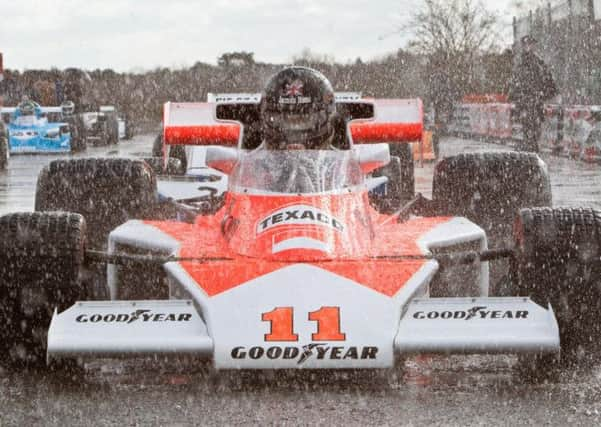Film Review: Natalie Stendall critiques how Rush creates powerful viewing


Early on the script from Peter Morgan - who also teamed up with Howard on the more robust Frost/Nixon - has little meaty to offer, focussing on Hunt’s rampant liaisons, desperation to make it to Formula 1 and superficial rivalry with Lauda. Crude narration plagues Rush throughout, told as it is from both driver’s perspectives in blatant, unambiguous terms, while a brazen effort to underline the sport’s dangers in the 1970s is initially spelled out rather too obviously: ‘What kind of person does a job like this? Each year two of us die,’ says Lauda, while Hunt’s comment, ‘The closer you are to death, the more alive you feel’ has a tacky ring to it.
Only when the script moves into the infamous 1976 race season does Rush find its feet and begin to tell a much more interesting story, delving into challenging themes and hamming up the tension. The horrifying aftermath of Lauda’s notorious crash is presented in graphic terms while Marlene looks on, making for uncomfortable but powerful viewing. Bruhl’s performance is second to none as he hints at the deep complexities hidden beneath the surface of this intriguing driver, getting to grips with Lauda’s changing attitudes as Morgan’s script switches up into top gear.
Advertisement
Hide AdAdvertisement
Hide AdAs Lauda’s rival, Hemsworth’s performance is much more hit and miss with a British accent that is borderline annoying, despite his compelling resemblance to the real-life Hunt. Yet in giving both his characters a narrative voice, director Ron Howard cleverly avoids taking sides. Which driver the audience identifies with is left entirely a matter of individual choice.
Script issues aside, Rush excels in its cinematic effort to put audiences in the drivers seat, bringing the speed and risk of historic Formula 1 to life through cinematographer Anthony Dod Mantle’s inventive camera angles and focus on captivating details such as spinning tyres and flicking water droplets. The 1970s colour palette is replicated beautifully, yet Rush teeters dangerously on the edge of style versus substance as another Hunt sex scene merges into the crunch of gears and pistons for the film’s cheesiest scene transition.
Another moving score from Hans Zimmer blends perfectly with the harsh intensity of heavy racing sounds to complete Rush’s climatic atmosphere of suspense as the 1976 race season draws towards its conclusion.
While Rush doesn’t stand up to Asif Kaspadia’s Bafta winning 2010 documentary film, Senna - that focussed on the competitive relationship between Ayrton Senna and Alain Prost - it brings similar themes of race safety and driver rivalry to a much bigger audience. Style and substance might battle it out for much of Ron Howard’s Rush, but a powerful, tension filled final act plants audiences right in the drivers seat. The second half of Morgan’s hit and miss script outweighs its earlier issues for a harrowing climax that puts plenty of meat on the bones of this fascinating drama.
Certificate: 15
Running Time: 122 minutes
Verdict: 4/5